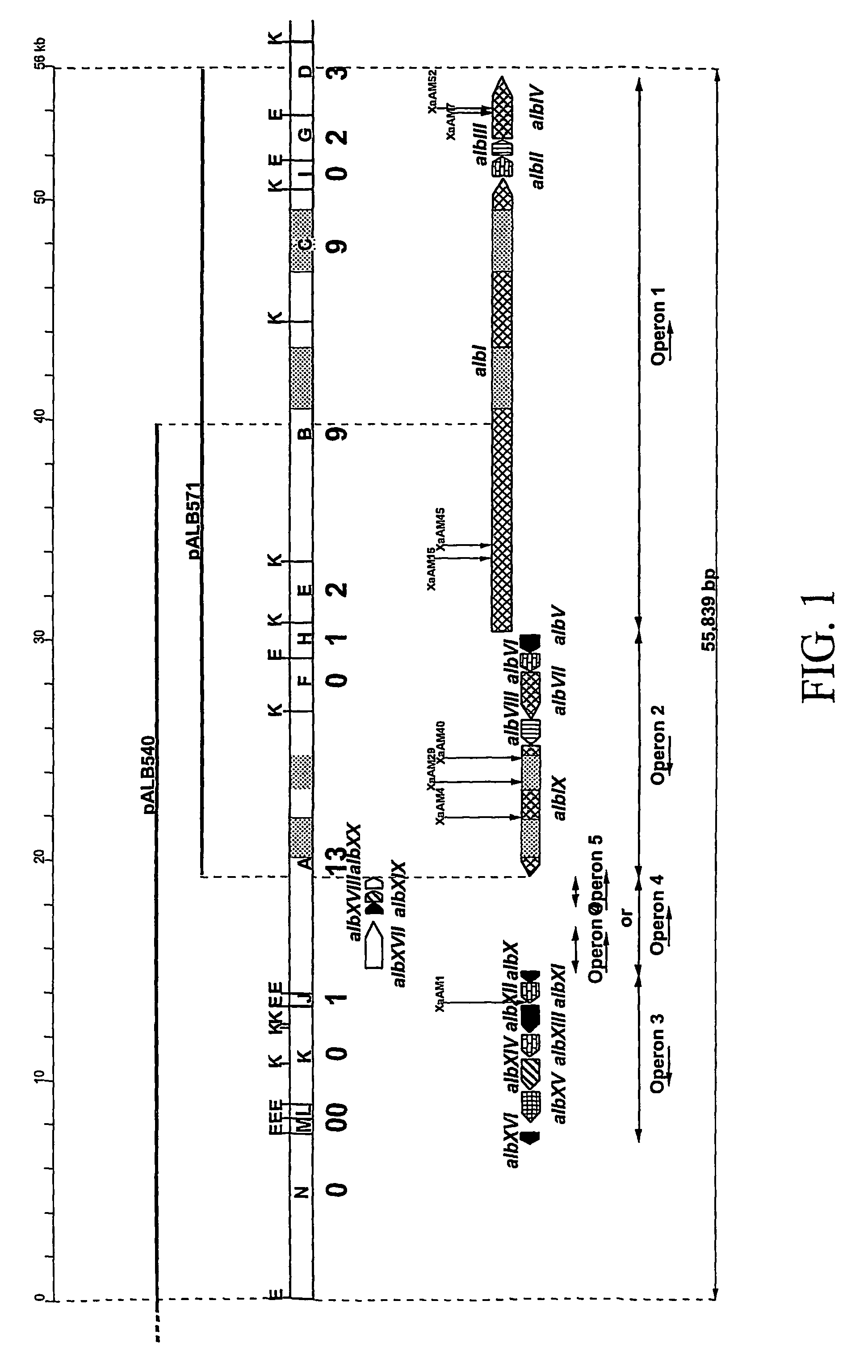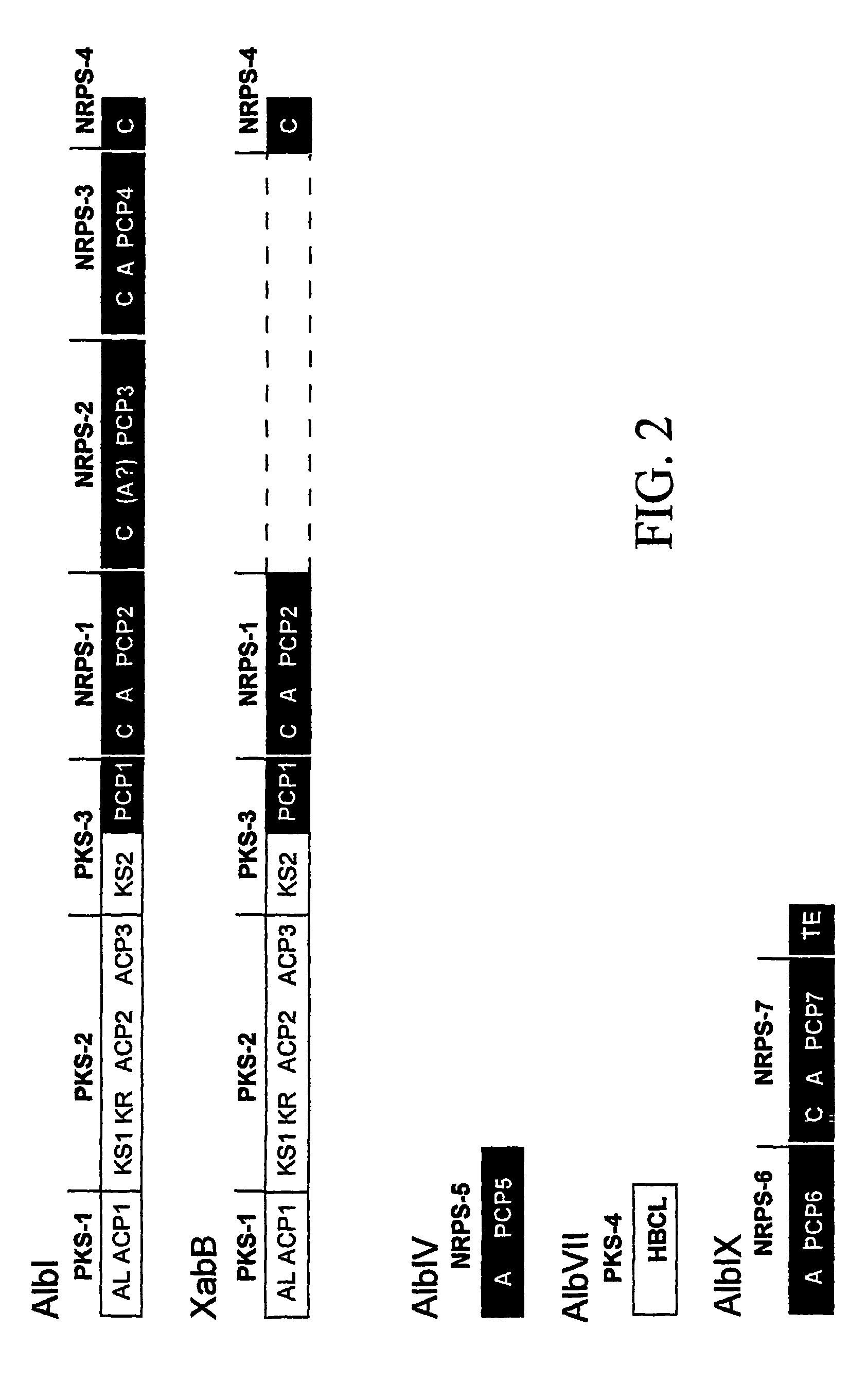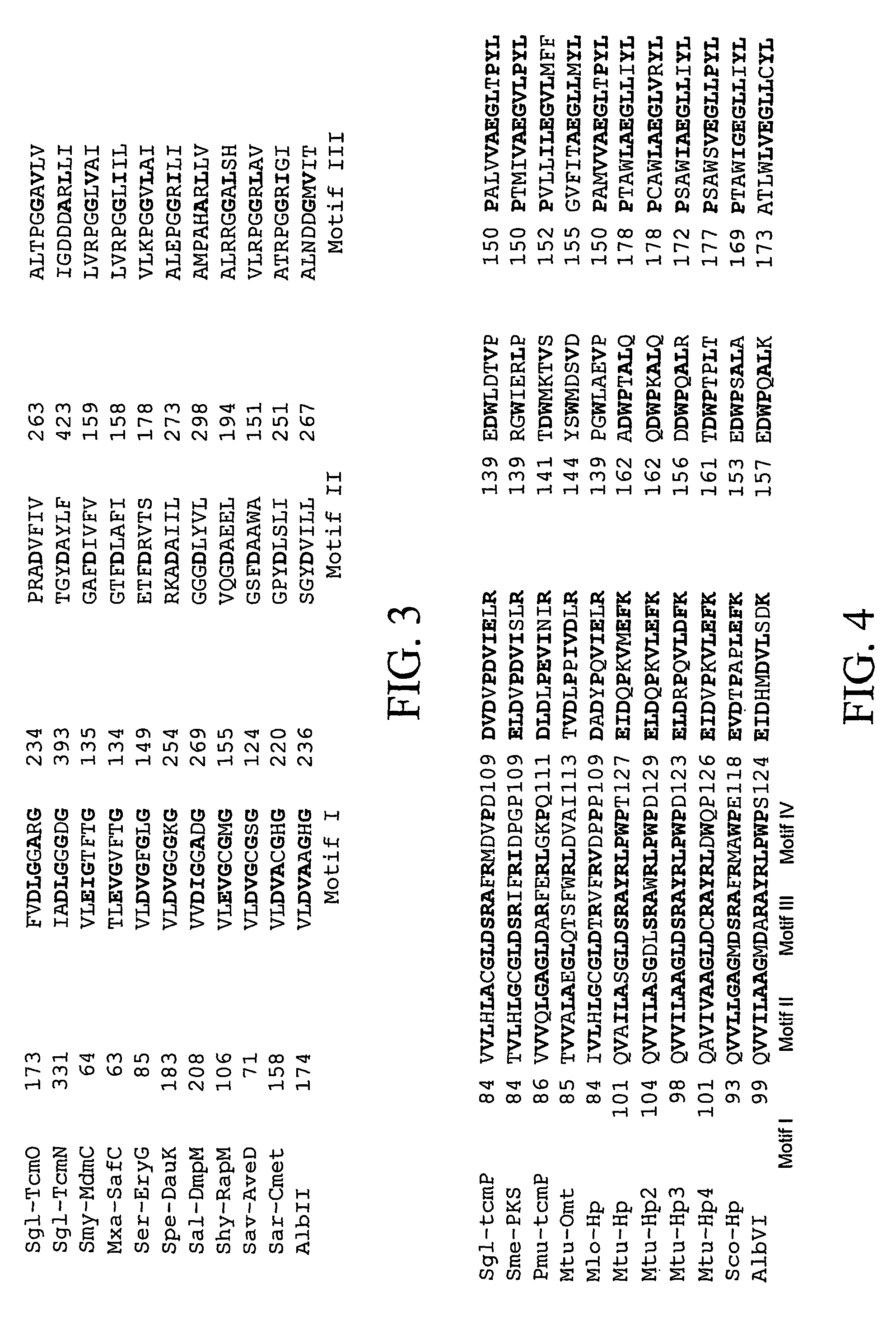Biosynthetic genes and host cells for the synthesis of polyketide antibiotics and method of use
a technology of biosynthetic genes and host cells, applied in the field of gene engineering, can solve the problems of slowing down the study of the chemical structure of albicidin and its therapeutic application, and the low yield of toxin production in i>x. albilineans /i>, and achieves the effect of high variation
- Summary
- Abstract
- Description
- Claims
- Application Information
AI Technical Summary
Benefits of technology
Problems solved by technology
Method used
Image
Examples
example 1
Materials and Methods
[0115]Bacterial strains and plasmids. The source of bacterial strains and their relevant characteristics are described in Table 1.
[0116]Media, antibiotics, and culture conditions. X. albilineans strains were routinely cultured on modified Wilbrink=s (MW) medium at 30C without benomyl (Rott et al., 1994). For long-term storage, highly turbid distilled water suspensions of X. albilineans were supplemented with glycerol to 15% (vol / vol) and frozen at B80C. For X. albilineans, MW medium was supplemented with the following antibiotics as required at the concentrations indicated: kanamnycin, 10 or 25 μg / ml; and rifampicin, 50 μg / ml. E. coli strains were grown on Luria-Bertani (LB) agar or in LB broth at 37C and were maintained and stored according to standard protocols (Sambrook et al., 1989). For E. coli, LB medium was supplemented with the following antibiotics as required at the concentrations indicated: kanamycin, 50 μg / ml; ampicillin, 50 μg / ml.
[0117]Bacterial con...
example 2
Sequencing of the Double Strand Region of 55,839 Bp from X. albilineans Containing XALB1 SEQ ID NO. 1
[0125]In FIG. 1 is presented a physical map and genetic organization of XALB1. In the figure, E and K are restriction endonuclease sites for EcoRI and KpnI respectively. Rectangular boxes represent DNA fragments labeled A through N. The numbers below each rectangular box are the number of Tn5-gus insertion sites previously located in each DNA fragment (Rott et al., 1996). The DNA inserts carried by plasmids pALB571 and pALB540 are represented by bold bars above the physical map. The location and direction of putative orfs identified in the XALB1 gene cluster are shown by arrows. Precise positions and proposed functions for individual orfs are summarized in Tables 2 and 3, respectively. Position of insertional sites of eight albicidin-defective mutants determined by sequencing are indicated by vertical arrows. The location and direction of putative ORFS identified in the XALB1 gene cl...
example 3
Analysis of the Large Internal Duplications in the DNA Sequence of XALB1
[0127]The sequence of the 55,839 bp genomic region (SEQ ID NO. 1) contains two large internal duplications as shown by the dotted regions in the physical map of FIG. 1. A direct duplication of 1736 bp was located in DNA fragment A between nucleotides G-19904 and G-21639 and between nucleotides G-23057 and G-24792. Another direct duplication of a 2727 bp was found in DNA fragments B and C between nucleotides C-40410 and G-43136 and between nucleotides C-46644 and G-49370. Comparison of the two copies of each duplication revealed that the two copies of the 1736 bp duplication are identical except for one nucleotide at position 21058, and that the two copies of the 2727 bp duplication are 98.8% identical and differ by 30 nucleotides.
PUM
| Property | Measurement | Unit |
|---|---|---|
| concentrations | aaaaa | aaaaa |
| concentrations | aaaaa | aaaaa |
| concentrations | aaaaa | aaaaa |
Abstract
Description
Claims
Application Information
 Login to View More
Login to View More - R&D
- Intellectual Property
- Life Sciences
- Materials
- Tech Scout
- Unparalleled Data Quality
- Higher Quality Content
- 60% Fewer Hallucinations
Browse by: Latest US Patents, China's latest patents, Technical Efficacy Thesaurus, Application Domain, Technology Topic, Popular Technical Reports.
© 2025 PatSnap. All rights reserved.Legal|Privacy policy|Modern Slavery Act Transparency Statement|Sitemap|About US| Contact US: help@patsnap.com



